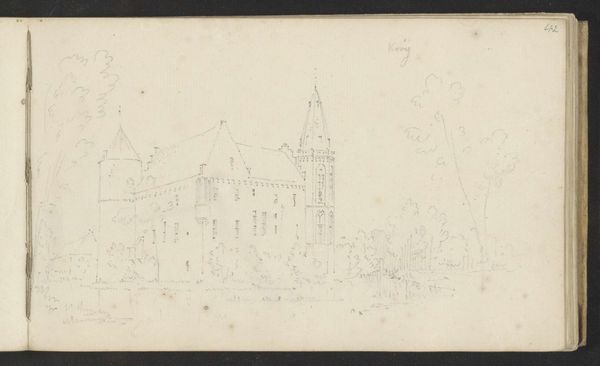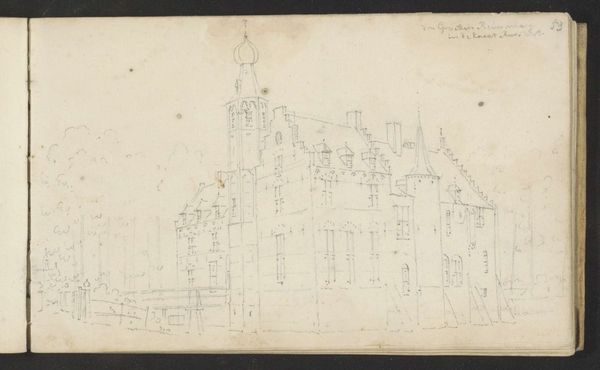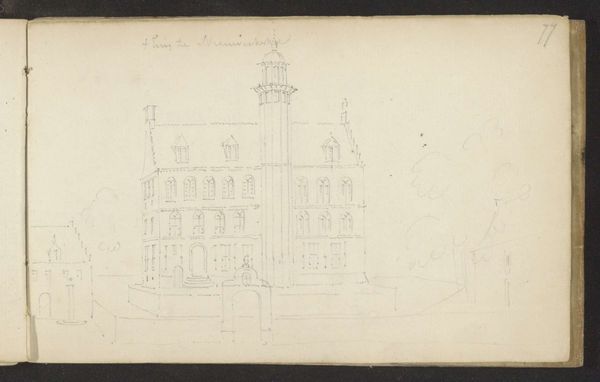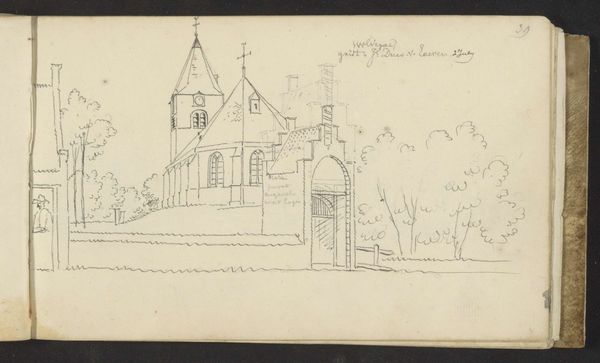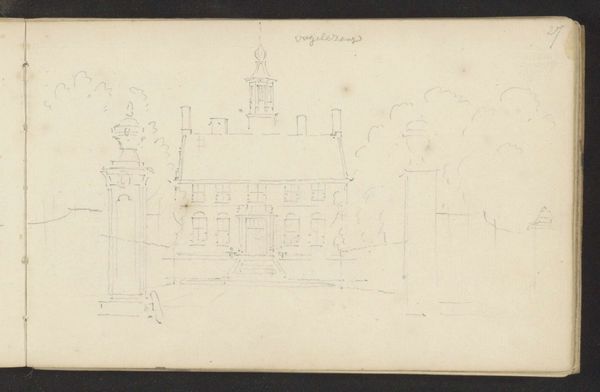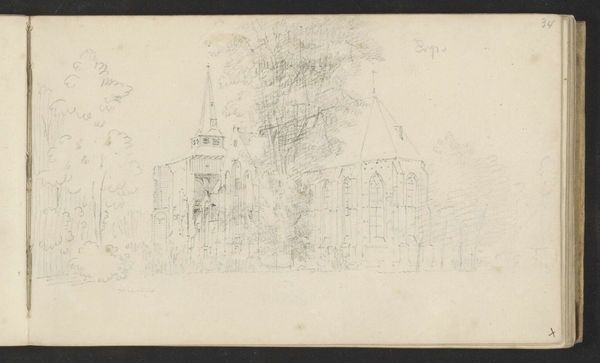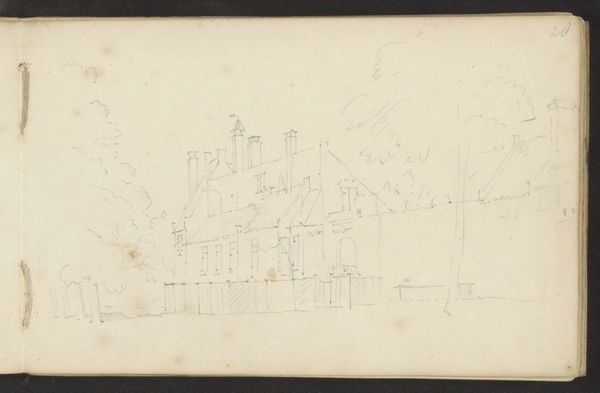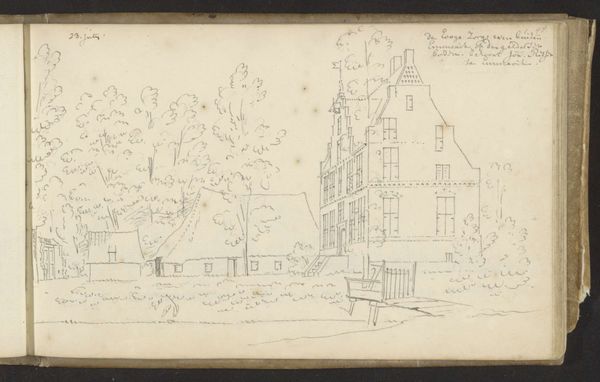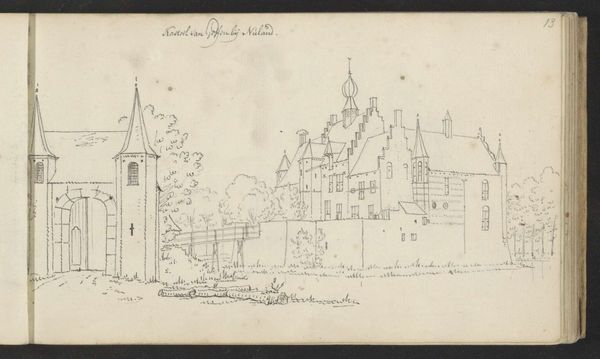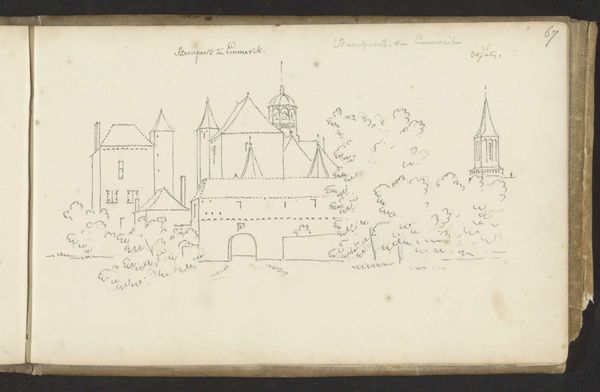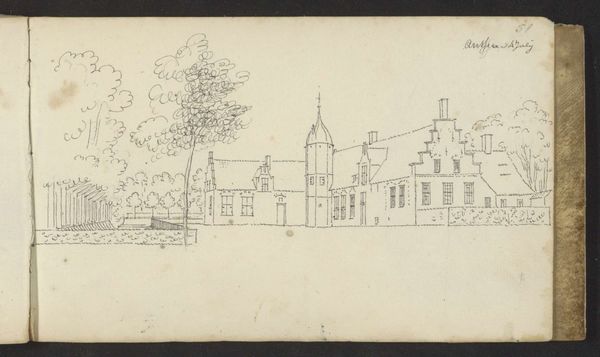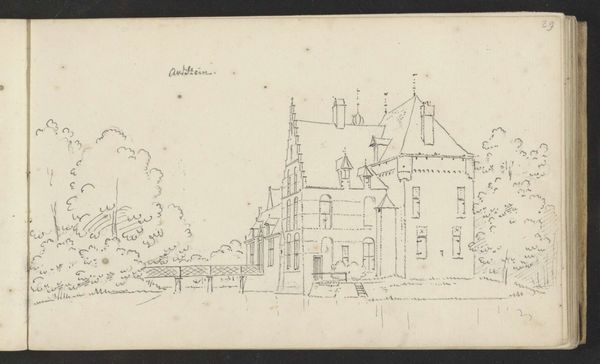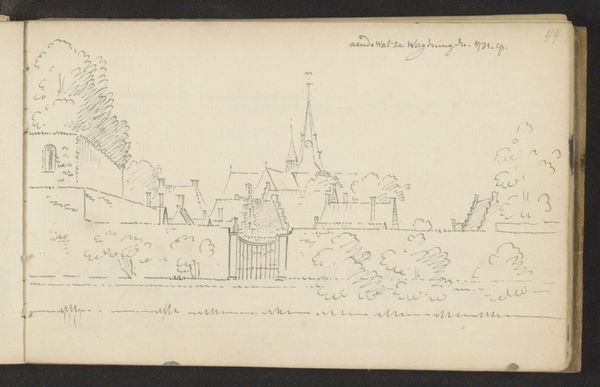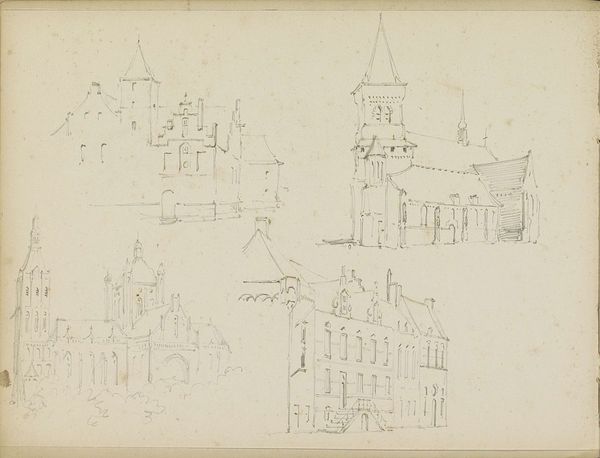
drawing, paper, pen, architecture
#
drawing
#
baroque
#
landscape
#
paper
#
pen
#
architecture
Copyright: Rijks Museum: Open Domain
Curator: This is Cornelis Pronk's "Kasteel Kleine Ruwenberg bij Sint-Michielsgestel," a pen drawing on paper made sometime between 1701 and 1759. It's currently held here at the Rijksmuseum. Editor: The first thing that strikes me is the delicacy of the line work. It’s incredibly detailed, but almost ephemeral—light as a feather. The architectural precision is fascinating. Curator: Pronk was known for his meticulous topographical drawings. They served a specific purpose; acting as a record, often commissioned by wealthy patrons interested in documenting their estates or properties of interest. It played a role in constructing a sense of place and ownership. Editor: Right, it's fascinating to think about this drawing in relation to labor. Pronk, of course, would have spent hours creating this piece. But beyond that, it suggests a whole social structure built around the castle itself. I see craft everywhere; in the laying of bricks and fabrication of the rooftop tower itself. The tower makes me wonder about the lives of workers, the consumption patterns involved... Curator: The Baroque style in the drawing hints at the era's social and political climate. Aristocrats sought to project power through grand architectural designs like the Kasteel Kleine Ruwenberg. It became part of establishing dominance. Editor: It makes you wonder who got to see this drawing, too. Was it just for the patron's eyes, a private display of wealth? Curator: More likely, it might have circulated among a small circle of elites, further reinforcing their status and connections. Reproductions, even if in limited quantities, helped disseminate these images. It's how architectural tastes were shaped and disseminated. Editor: Yes, you can trace that architectural vision—and all its associated power—spreading through similar drawings. You have to respect Pronk's rendering; his control and dedication to recording so accurately. Curator: Studying works like this through the lens of its social purpose unveils stories that are frequently overlooked. The interplay between art, power, and society during the Baroque period becomes so much richer. Editor: Absolutely. Analyzing the materiality along with the social environment gives an in-depth view. The texture of the drawing itself gives so much more insight to that long-lost tower's place in society.
Comments
No comments
Be the first to comment and join the conversation on the ultimate creative platform.
